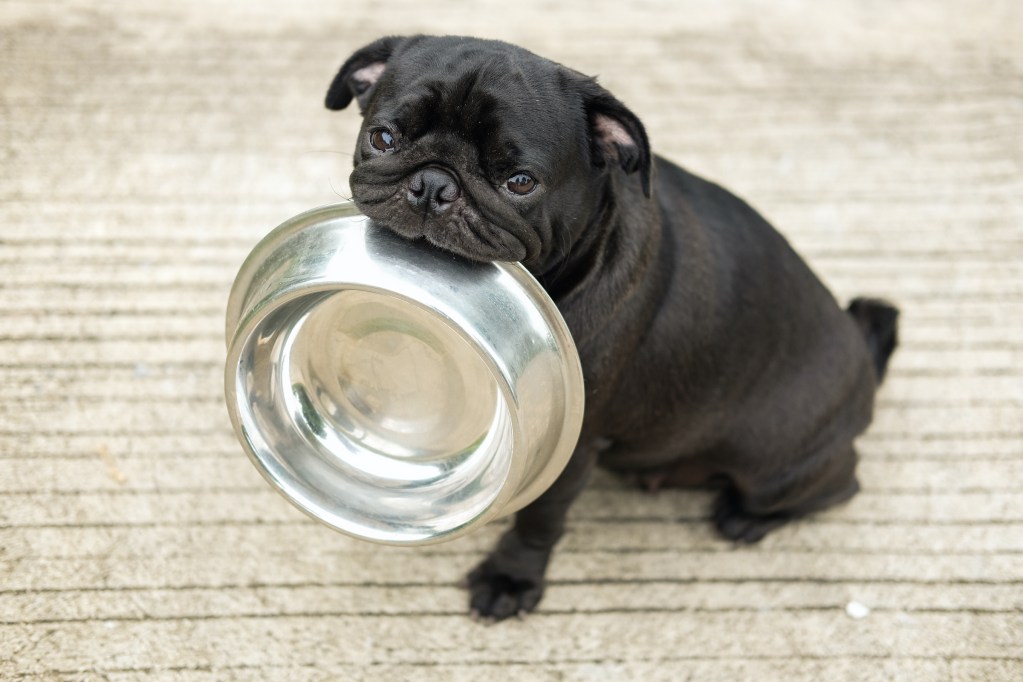We humans love tomatoes and have incorporated this delicious nightshade into our diets across the world. Today, they even show up in some pet food. While you might chow down on a delectable tomatoey pasta sauce or a salad, it’s unlikely that those should enter into Fido’s meal plan. So can dogs eat tomatoes plain or canned? You’ll need to do your research before slipping them a juicy ripe tomato for a snack.
Can dogs eat tomatoes?

Well, it’s not so simple. There are a few foods, such as chocolate and onions, that should always stay on the no list for your pup. You don’t ever want to let your beastie have even a little bit of these, as they can prove toxic. Tomatoes, fortunately, aren’t in that column, but they shouldn’t become a staple in your dog’s diet.
You’ll notice tomatoes show up on the ingredients list of some kibble varieties because they provide an excellent source of certain vitamins, and therefore, can help your animal stay healthy as a small part of a balanced meal. Still, that doesn’t mean you should break out this fruit every time your fur baby deserves a treat. And remember that treats across the board should only make up 10% of their daily intake.
When are tomatoes bad for dogs?

The most important rule: Pooches should only eat ripe tomatoes. Young tomatoes contain both solanine and tomatine that will hurt a bud’s stomach, so you don’t want to ever give them the leaves, stems, or a green tomato.
Additionally, some beasties will go after a tomato plant if you keep them around the house or in the garden. You can block these with fencing or put them somewhere out of reach so that you don’t have to take a trip to the vet. No matter where the fruit comes from, make sure it’s bright red and juicy!
What problems can tomatoes cause for dogs?

It’s rare that dogs will eat enough green tomato or tomato stem to actually get tomatine poisoning, though this certainly could happen. Usually, you’ll only have to deal with a few basic symptoms, like an upset stomach, but extreme cases can include vomiting, tremors, and heart issues.
Even ripe tomatoes can give your buddy some tummy troubles because they have relatively high acidity. Start with just a bite to make sure they can handle it, and as with all treats, only offer this juicy red snack in moderation.
How can I feed my dog a tomato?

First, skip soup and sauce entirely. Those might have garlic, sugar, and salt, all of which you want to generally avoid in their day-to-day meals (and garlic is on that never list). Canned tomatoes also have some of these ingredients and should not end up in their bowl.
So, how can they eat tomatoes? Make sure to wash them, and you may decide to pick organic to eliminate pesticides. Your pet will love the brightest red, ripest one of the bunch and that’s what you should pick out for them. Always get rid of stems, leaves, and any other green parts that will hurt their digestive system.
Start with a small piece to see if they like it. Some dogs will reject tomatoes outright because of the strong flavors. Others might jump for joy every time they notice you reach for this nibble. You probably want to cut a big piece of fruit into slices or choose small ones that will easily fit into their mouths — though you don’t want ones that present a choking hazard. Owners know their dogs best and will have a good idea of which size works best for your each animal.
Closing thoughts on dogs and tomatoes

You can add tomatoes to the list of foods that you and your best friend can enjoy together, as long as you take a few precautions in advance. Next time you make yourself a salad, slip your puppers a single slice and see if they like it. You could eventually graduate to providing a whole (but still sliced) ripe tomato for your beastie. Don’t forget to keep the canned tomatoes and sauces in the pantry, since they could have other ingredients that wouldn’t do well for your little guy’s digestive system.
Assuming you get all this down, you can both enjoy some delicious tomatoes together. For an even better snack, mix it with veggies like squash, carrots, and green beans. All these do wonders for your pet’s digestive system and will become a welcome addition to their meals.




